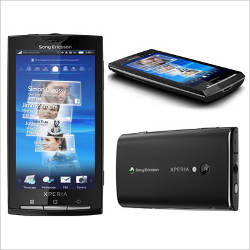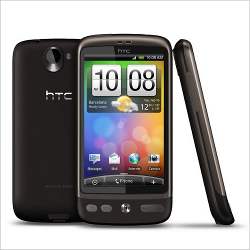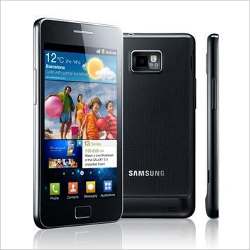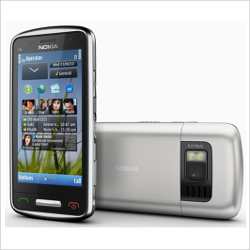This latest smartphone of HTC is full of latest — an all new Android 2.3.3 operating system, HTC sense 3.0 user interface, and the recently launched Qualcomm Snapdragon 1.2 GHz dual core processor. With powerful specs like 8 Megapixel camera with HD video recording, Flash 10.1 support, and a 4.3 inch qHD (quarter high definition) screen, it is pitted against the best.
But is it the best in real world use?
Hardware
It is obvious that HTC Sensation will be compared against the Samsung Galaxy SII, with both matching head to head in hardware – the only difference being the weight where HTC is much heavier at 148 grams compared to 118 Grams of Samsung Galaxy.
However, this does not mean that Sensation feels heavier. It is much more comfortable to hold as it is narrower than the Galaxy (thanks to the change in aspect ratio of the screen) and easier to grip despite being thicker than Galaxy (although opinions can vary, this is widely a consensus).
One of the major disadvantages of HTC Sensation is the fact that it has only 1GB of inbuilt memory versus 16GB of Galaxy SII. Its RAM is also lesser at 778MB compared to the 1GB of Galaxy.
So in hardware space, HTC Sensation is not the best but that’s not something to worry as it has a latest version of the processor, which is asynchronous compared to the Galaxy’s synchronous one, meaning that the two cores of HTC can work independently of each other saving power and giving better speeds.
The 8 Megapixel camera is capable of recording high definition videos; the camera quality is good with stills and brilliant with video. The auto focus camera does a good job of focusing on subject in both still and video. If you are not satisfied with the result just touch the display and the camera focuses where you touched.
There are several pre-sets available but manual controls are limited. Compare to the Galaxy SII, the Sensation wins hands down as its camera fires up quickly and snaps pictures with even faster speed. Otherwise it’s a draw.
The screen is a 4.3 inch capacitive touch with 540X960 pixels qHD Resolution (Samsung Galaxy SII has 4.3 inch with 480 x 800 pixels resolution). It is brilliant with the colour and sharpness, making it easier to read web pages even without zooming in, e-books and other text are also very sharp. However, the screen pales when it faces the sun. It’s here that the Galaxy scores better.
The Sensation is encased in an aluminium uni-body, in fact it is a three piece unit with two part plastic and one part aluminium. However, the case is sturdy and the build quality is top notch.
It’s also not uni-body in the iPhone way – you can take out the back cover. The front glass seems to come out when you open it. The SIM card and micro SD card slot is also placed inside the cover. The antennas are mounted on the cover, so the phone doesn’t work without it.
The 3.5 mm jack is placed at the top and so is the power on button. On the right hand side, the volume key and USB ports are placed. Sadly, there is no physical button for the camera.
Battery backup is the main problem area of the phone despite the fact that the phone comes with 1520 mAh battery; the phone hardly lasted till evening with overnight charging even with medium usage – half an hour of calling, little bit of WiFi browsing, plus 45 minutes of radio and music.
We thought that this is a problem with this particular handset but that does not seem to be the case. So much talk of asynchronous processing, helping save power does not seem to hold ground.
Software
The Sensation comes with the latest Android 2.3.3 version and HTC sense UI’s latest 3.0 version. Both work flawlessly and are smooth in their operation.
Although there is no revolutionary feature added to the HTC Sense user interface, it makes the user experience much delightful with the small changes it brings with it.
The first thing that you notice is the new unlock mechanism, which is now a ring instead of sideways or upwards swipe that comes with the standard Android. Applications can be dropped in the ring to open; you do not need to unlock the screen first. So it’s just one step less but then I already told you it’s the little things.
The weather App is marvellous; it gives you complete feel of weather outside. The integration with the phone is also superb.
The phone makes full use of the powerful 1.2 GHz processor inside and gives a very fluid and vibrant user experience.
Contact and sync feature have been integrated very well – you would get all the updates of your contacts from Facebook and Twitter or any other social network in a single screen when you dig out the contact. Digging out the contact is kind of old school with predictive T9 dictionary type of search.
There are other good things that have been carried forward from the last version of the sense UI such as flipping the phone to silence it.
There are many more small little things about the UI to talk about but we would not bother you with that, we will only say, “enjoy the whole experience”.
There is also a new service debuting on the Sensation — the HTC Watch, which is a movie/video rental and purchase service started by HTC. However, right now there are only few trailer available in this service, hope movies make appearance soon.
Performance
With 1.2 GHz processor, we did not expect any hiccups in performance. The phone indeed did not disappoint all the touches and swipe worked without a hitch; applications opened with no time as well. Only thing that is a bit slow is predictive text but that too is like fraction of a second slow, nothing deal breaking.
The sound quality of the speaker is good, infact good is an understatement, but we will stick to that since it’s not really loud, but the clarity is top notch. The supplied ear piece is kind of big and does provide clear sound output. However, it is not loud either but then most top manufacturers seem to keep it that ways (care for your ears).
One thing that disappoints is the radio. The reception is poor, in fact at first you will think that the phone doesn’t have one as it is not there in the main menu – you will need to go to widgets by long pressing the empty screen. There is also a torch function which you will find here.
Verdict
The phone is a HTC flagship and as such we had high expectations from it, and we would say we are not disappointed. But, the HTC Sensation lacks just a little bit when we compare it with the Samsung Galaxy SII, in terms of performance, as both of them are priced neck to neck comparisons will be made.
But does that mean you should buy the Samsung? Not really. Oh, well, you can but HTC is equally competitive, what works in favour of the HTC is its fluid and interesting user interface, the phone is also easier to hold despite being heavier, the build quality is top notch. However, if you like vanilla Android experience, Samsung is a better choice.



 In the new application, the tweet composer is hidden from the timeline by default, but is accessible from the new Compose Tweet bar located below the navigation bar, which is at the top of the timeline. Alternatively, you can tweak the menu settings to display the tweet composer as a static fixture at the top of the home time line, as it is displayed in Twitter on-line.
In the new application, the tweet composer is hidden from the timeline by default, but is accessible from the new Compose Tweet bar located below the navigation bar, which is at the top of the timeline. Alternatively, you can tweak the menu settings to display the tweet composer as a static fixture at the top of the home time line, as it is displayed in Twitter on-line.
 Sony Ericsson Xperia X10
Sony Ericsson Xperia X10 HTC Desire HD
HTC Desire HD Samsung Galaxy SII
Samsung Galaxy SII Nokia C6-01
Nokia C6-01